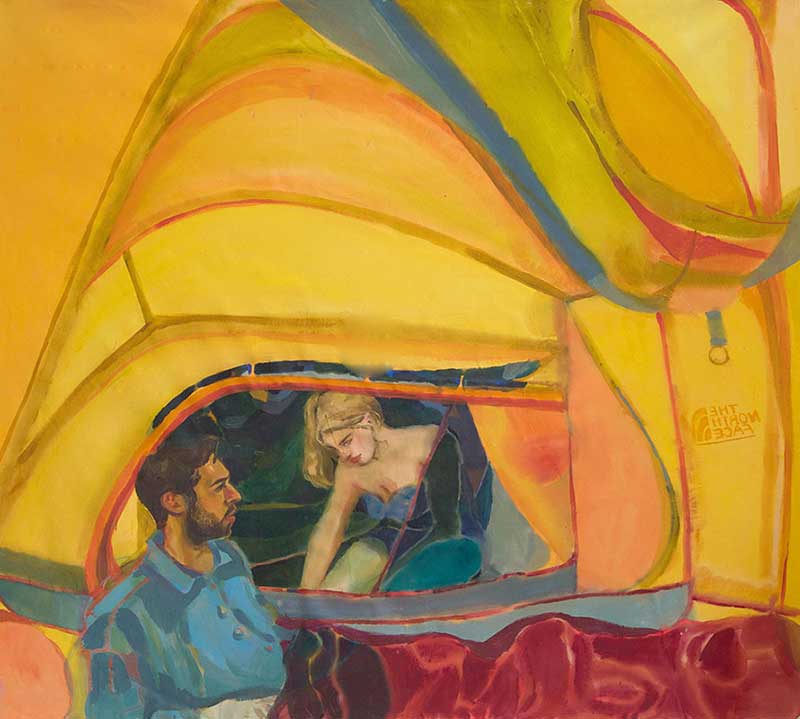Harper’s paintings are heavily narrative, encouraging the viewer to ask what the elusive figures are doing, or to consider where they might be going.
Rebecca Harper’s work has been heralded for its ability to illustrate liminal spaces: diaspora and memory and, in her 2019 series Concrete Shadows, journeys. It is an imagery reflected in the process of its making: a sense of displacement embodied through Harper’s challenging of her work never to rest singularly during its creation. Starting by reconstructing and rearranging drawings made from life, events which Harper recalls from both memory and imagination are meticulously collaged back to life. Multiple colour studies created on the floor of her studio gradually tile together into seamless imagery and, eventually, are enlarged onto the studio wall. As such, each work has lived multiple and discrete lives before the final image is brought to bear on canvas.
Harper describes the figures that emerge during this process as ‘actors’. Whilst they are fictional, they are intended to capture the viewer’s imagination – reminding them of the stories which surface behind casual snapshot photography, or the tiled squares of an Instagram feed. In this regard Harper’s paintings are heavily narrative, encouraging the viewer to ask what the elusive figures are doing, or to consider where they might be going. Similarly, the acrylic colours employed by Harper – warm, deep, improbable – render her landscapes an imagined space, and their wash application similarly appeals to both the ethereal and the dream-like. Nonetheless, each scene is jarringly familiar – a trait which no doubt stems from their grounding in reality, and Harper’s ongoing use of life drawing.
This discord reaches its zenith in her painting, The Spirit of Alienness, 2018. Here, billows of yellow enshroud two central figures, encased in a tent. Their postures seem to align, but their gazes fail to meet. In the foreground, a man sits up in a sleeping bag, as if just awoken from a dream. In the background, a woman hunches, preoccupied. Swathes of yellow fabric canopy above the two to create a resonant, yet fundamentally temporary, mis-en-scene. Viewed in person, this effect increases sevenfold, implicating the viewer in the tent-space of the painting. The liminal imagery of this piece is made fraught, however, with Harper’s explicit inclusion of ‘The North Face’ logo. Painted backwards as if written on the inside of the tent, the logo could easily go unnoticed. However, the specificity and commercialism implied by its inclusion seems at odds with the ethereal imagery of the piece. Harper creates a compelling argument that the dream world and the world of commerce are no longer completely separate spheres. Here, Harper’s painting becomes both timeless and timely, both mythic and millennial
